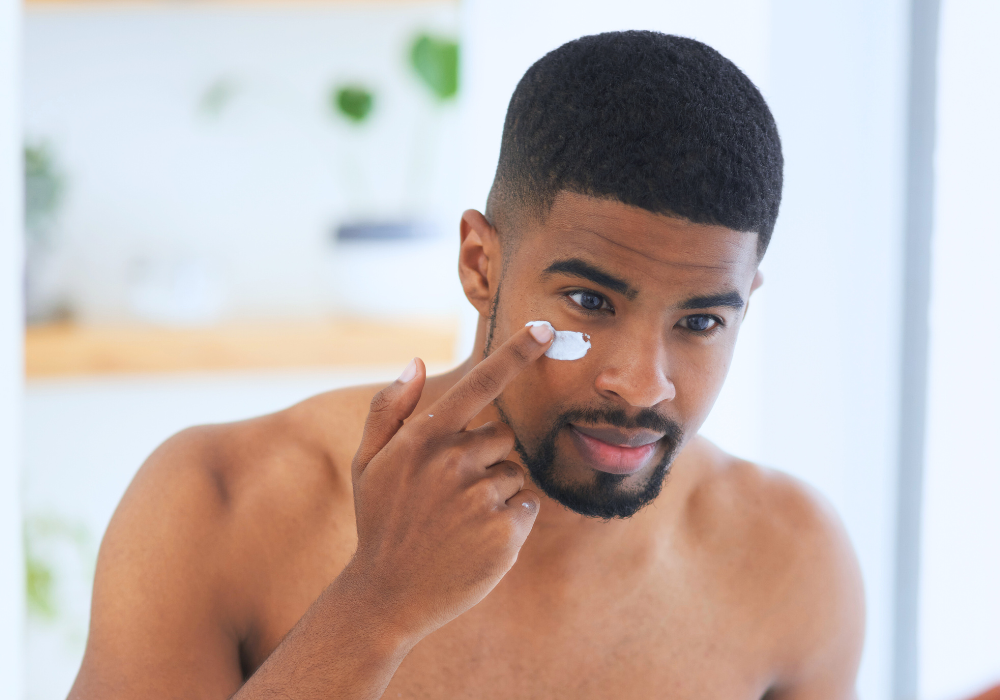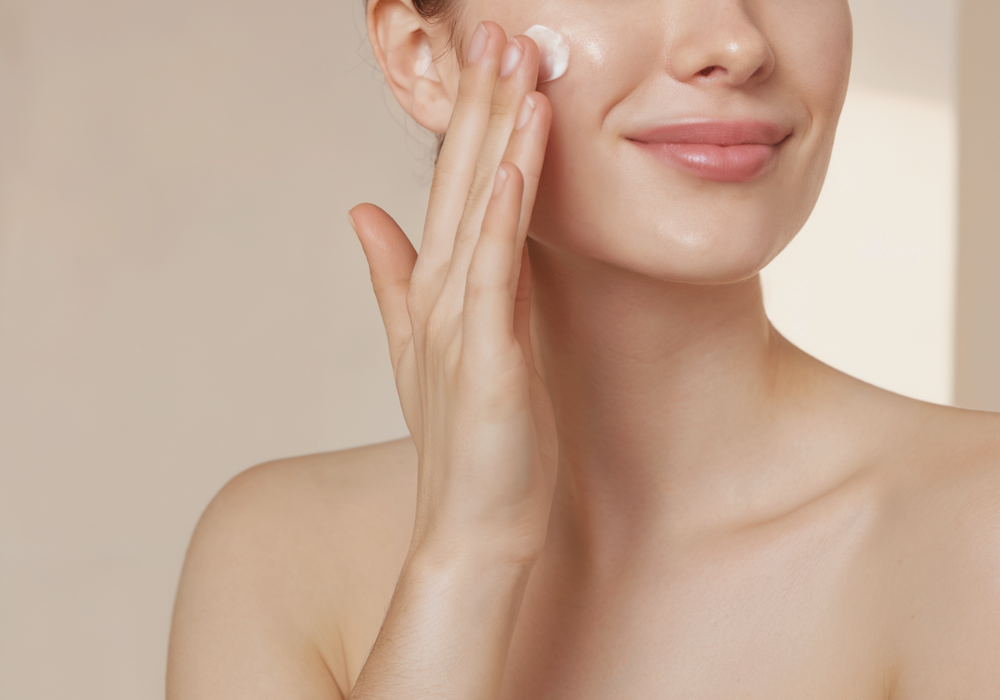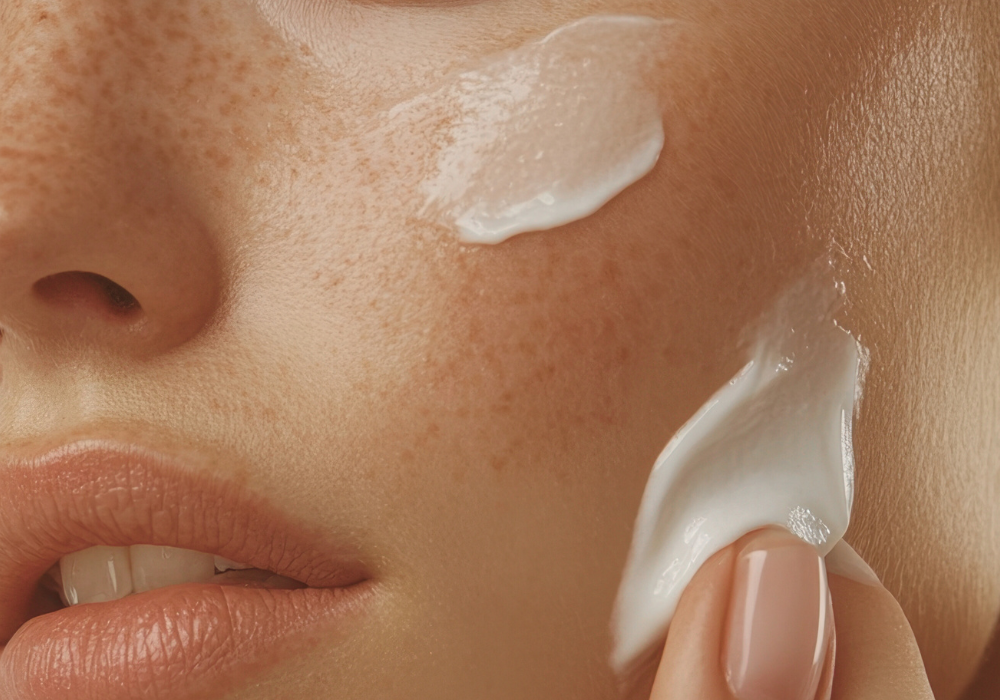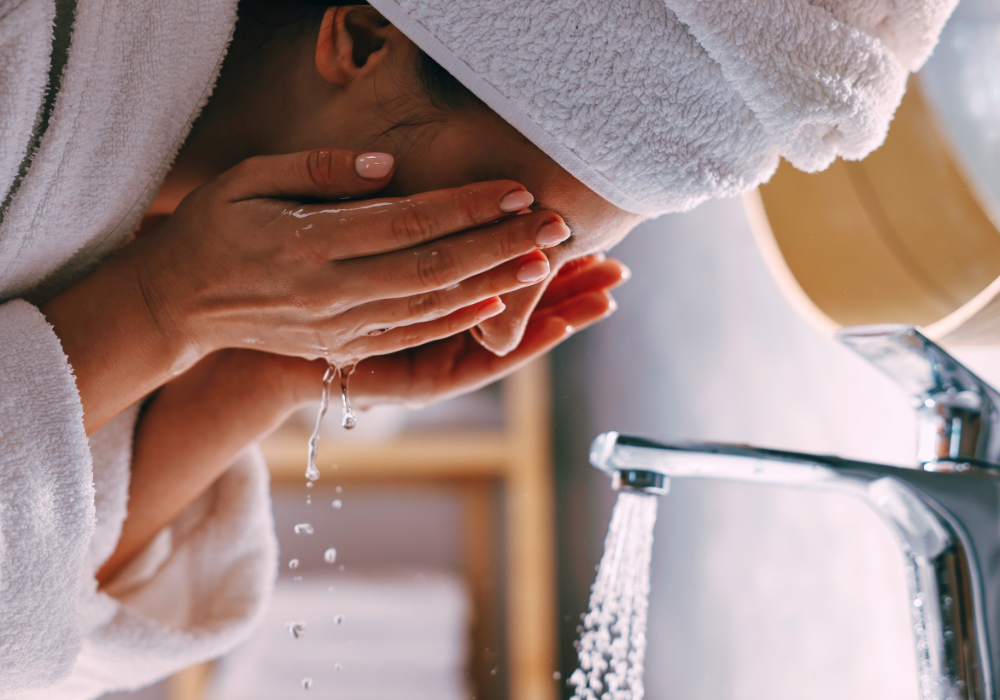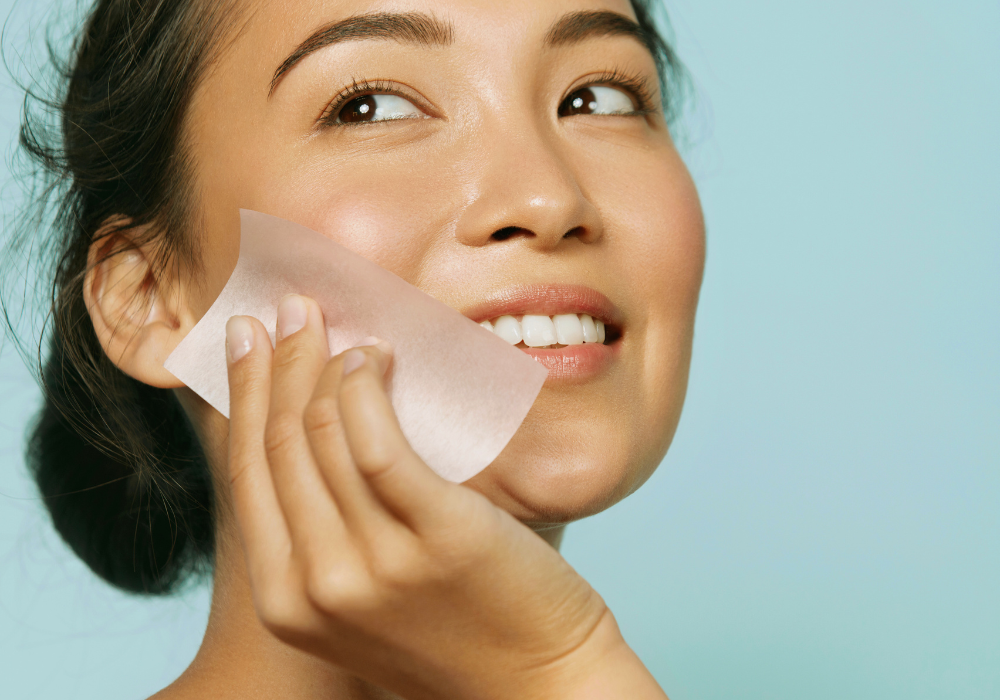Evidence-based data on men's skincare effectiveness, routine adherence, and science-backed approaches to balanced skin health
Key Takeaways
-
Male skincare adoption accelerates significantly - 43.4% of men now use skincare products, representing a 20.7% growth since 2020, with men aged 25-40 showing 68% adoption of multi-product routines across all skin types
-
Visible improvements emerge within consistent timeframes - Most men notice measurable improvements in skin texture and hydration within 4-6 weeks of consistent routine implementation, though complete skin barrier repair typically requires 8-12 weeks of dedicated use
-
pH-balanced cleansing supports skin health - Proper pH-balanced cleansers help reduce common shaving-related concerns like razor bumps (pseudofolliculitis barbae) by maintaining skin's natural acid mantle, particularly benefiting men with coarse facial hair and melanin-rich skin
-
Daily sun protection prevents photoaging - Consistent daily use of broad-spectrum SPF 30+ significantly reduces visible signs of photoaging including fine lines, wrinkles, and hyperpigmentation when maintained over years
-
Multi-functional products increase routine sustainability - Products combining exfoliation, cleansing, and hydration in single formulas improve long-term compliance while delivering triple benefits without complexity
-
Market growth reflects cultural acceptance - The global men's skincare market projects growth from $17.6 billion in 2025 to $37.3 billion by 2035, driven by self-care normalization and science-backed product demand
-
Proper hydration benefits all skin types - Even men with oily skin benefit from lightweight hyaluronic acid formulations that deliver lasting moisture without increasing sebum production or causing breakouts
Skin Balancing Statistics Every Man Should Know in 2025
1. 43.4% of men currently use skincare products, up 20.7% since 2020
Male skincare adoption has increased from 40.5% five years ago to 43.4% currently, representing significant growth in routine establishment. This expansion reflects broader cultural acceptance of men's self-care practices and increased awareness of skin health benefits beyond aesthetic concerns. Men aged 25-40 demonstrate highest adoption rates, with 68% incorporating at least three products into daily routines, establishing multi-step skincare as standard practice among younger demographics. Source: Roy Morgan
2. Visible improvements emerge within 4-6 weeks of consistent use
Most men notice measurable improvements in skin texture and hydration within 4-6 weeks of consistent routine implementation. This relatively short timeframe establishes realistic expectations while providing tangible feedback that reinforces continued adherence. Complete skin barrier repair typically requires 8-12 weeks of dedicated routine for full restoration of compromised skin function. Products formulated with triple action hydroxy acids and hyaluronic acid can help deliver visible results while supporting long-term barrier health. Source: PubMed
3. Daily sunscreen use significantly reduces visible aging over time
Consistent daily application of broad-spectrum SPF 30+ sunscreen remains one of the most effective and scientifically validated ways to preserve skin health and prevent visible aging. A landmark randomized controlled trial conducted in Australia found that participants who applied sunscreen daily exhibited 24% less measurable skin aging over a 4.5-year period compared to those who used it at their discretion. This long-term protection mitigates cumulative UV damage, reducing fine lines, wrinkles, and uneven pigmentation while lowering future skin cancer risk. Daily SPF use is therefore considered essential to maintaining balanced, resilient skin through all stages of life. Source: Annals of Internal Medicine
4. Chemical exfoliation provides balanced renewal for most skin types
Chemical exfoliants such as alpha-hydroxy acids (AHA) and beta-hydroxy acids (BHA) often prove gentler and more precise than traditional physical scrubs, which can cause micro-tears or barrier irritation when used aggressively. Properly formulated chemical exfoliants dissolve dead surface cells without abrasion, improving skin texture, clarity, and absorption of other products. Dermatologists recommend beginning gradually — one to three times weekly — and increasing frequency as tolerance builds. This controlled approach promotes renewal without compromising barrier health. Source: Healthline
5. Even oily skin requires proper hydration to maintain balance
Contrary to common perception, oily skin still benefits greatly from consistent hydration. When the skin is dehydrated, it may respond by overproducing sebum to compensate for moisture loss, leading to clogged pores and imbalance. Lightweight, non-comedogenic moisturizers containing humectants like hyaluronic acid restore optimal hydration without heaviness or shine. This process stabilizes oil production and enhances overall barrier resilience, allowing oily skin to remain balanced, smooth, and healthy. Source: American Academy of Dermatology
6. Global men's skincare market grows 10.5% annually through 2035
The global men's skincare market projects growth from $17.6 billion in 2025 to $37.3 billion by 2035, reflecting 10.5% compound annual growth rate. This expansion demonstrates sustained demand for science-backed men's skincare products and cultural normalization of male self-care practices. The growth reflects both increased adoption rates among younger demographics and broader geographic expansion across global markets. Source: Future Market Insights
Why Skin Balancing Matters for Men
Skin balancing refers to maintaining the skin's natural pH levels, oil production, and moisture barrier to prevent excessive dryness, oiliness, and breakouts. For men, this approach addresses biological differences including thicker skin and higher sebum production compared to women's skin. Modern science-backed exfoliating cleansers formulated at skin's natural pH deliver effective balancing without disrupting protective barriers.
Male skin tends to be thicker and has higher sebum production than female skin, requiring specialized cleansing and moisturizing approaches that regulate natural oil production without stripping protective elements. This biological distinction explains why formulations designed for men's specific needs often achieve superior results.
The cultural shift away from traditional masculinity norms has increased men's willingness to adopt comprehensive skincare routines. What began as a niche market has evolved into mainstream self-care practice focused on skin health rather than appearance alone, creating demand for simplified yet effective solutions backed by dermatological research.
The New Era of Men’s Skincare
Modern men’s skincare is shifting from trend-driven habits to science-led self-care rooted in consistency and results. What once felt like a cosmetic luxury is now understood as a daily health practice — much like nutrition or fitness — essential for maintaining skin resilience and long-term vitality.
The key difference today lies in awareness and access. Men are increasingly informed about the connection between environmental exposure, stress, and skin function. Urban living, digital screen time, and frequent shaving all accelerate oxidative stress, inflammation, and barrier fatigue — challenges that require more than basic cleansing to address. Cutting-edge formulations now integrate antioxidants, adaptogens, and biomimetic actives that actively counter these stressors, helping the skin recover and perform optimally throughout the day.
Technology has also changed how men engage with skincare. Personalized routines, minimalist systems, and data-backed ingredient transparency empower men to make informed decisions rather than relying on marketing claims. This shift toward ingredient literacy — understanding how things like niacinamide, peptides, and ceramides support different skin needs — represents a cultural and scientific evolution in male grooming.
Just as importantly, the conversation around men’s skincare has become inclusive and practical. Modern products focus less on appearance and more on skin function — hydration, barrier protection, and defense against premature aging. This reframing has encouraged millions of men to view skincare not as vanity, but as an investment in well-being.
As science continues to advance, men’s skincare will keep evolving toward efficiency, sustainability, and personalization — three values shaping the next decade of self-care. Balanced, healthy skin is not about perfection; it’s about creating a consistent, evidence-based routine that fits seamlessly into a modern lifestyle.
Frequently Asked Questions
How often should men exfoliate their skin?
Men should start exfoliating slowly—typically 1-2 times per week—and adjust based on skin tolerance. Chemical exfoliants with AHA, BHA, and PHA at appropriate concentrations can be used more frequently than harsh physical scrubs when properly formulated and tolerated. Physical exfoliation should generally be limited to 1-2 times weekly maximum to prevent barrier damage and irritation.
What pH level is best for facial cleansers?
The optimal pH range for facial cleansers is 4.5-5.5, matching skin's natural slightly acidic environment. This range effectively removes impurities while preserving the acid mantle that protects against harmful bacteria and supports beneficial microbiome populations. Cleansers with higher pH levels can disrupt this protective barrier, potentially causing dryness, irritation, and increased sensitivity over time.
Can oily skin benefit from hydrating products?
Yes, oily skin requires proper hydration to prevent compensatory sebum production triggered by dehydration. Lightweight formulations with hyaluronic acid deliver necessary moisture without heavy textures or greasy residues. Properly hydrated skin actually produces less excess oil than dehydrated skin attempting to compensate for moisture loss, making hydration essential for managing oily complexions.
How long does it take to see results from a skincare routine?
Most men notice visible improvements in skin texture and hydration within 4-6 weeks of consistent routine implementation, though complete skin barrier repair typically requires 8-12 weeks. Early results emerge faster with effective formulations containing clinically proven concentrations of active ingredients like hydroxy acids and hyaluronic acid that deliver multiple benefits simultaneously.
Do men need different skincare products than women?
Male skin tends to be thicker with higher lifelong sebum production, creating different formulation requirements for optimal results. While many active ingredients work across genders, men often achieve superior outcomes from products addressing higher oil production, thicker skin, and specific concerns like razor bumps. pH-balanced formulations work effectively when matched to individual skin type and concerns regardless of gender.
